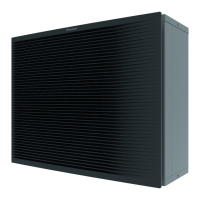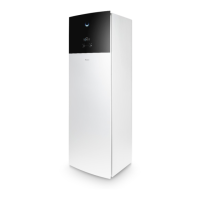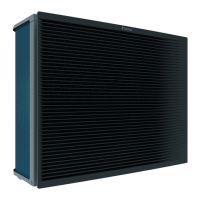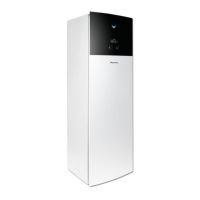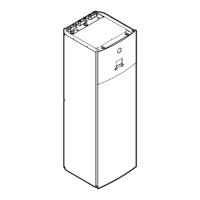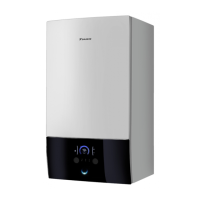10 | Configuration
Installer reference guide
166
EPRA14~18D + ETVH16SU18+23E
Daikin Altherma 3 H HT F
4P644738-1A – 2022.03
# Code Description
[2.6] [1-06]
[1-07]
[1-08]
[1-09]
Set weather-dependent cooling:
Note: There are 2 methods to set the weather
dependent curve. See "10.4.22-points
curve"[4153] and "10.4.3Slope-offset
curve"[4154]. Both curve types require 4 field
settings to be configured according to the figure
below.
[1-09]
[1-08]
T
a
T
t
[1-06] [1-07]
▪ T
t
: Target leaving water temperature (main
zone)
▪ T
a
: Outdoor temperature
▪ [1-06]: Low outdoor ambient temperature.
10°C~25°C
▪ [1-07]: High outdoor ambient temperature.
25°C~43°C
▪ [1-08]: Desired leaving water temperature
when the outdoor temperature equals or drops
below the low ambient temperature.
[9‑03]°C~[9‑02]°C
Note: This value should be higher than [1‑09]
as for low outdoor temperatures less cold
water is required.
▪ [1-09]: Desired leaving water temperature
when the outdoor temperature equals or rises
above the high ambient temperature.
[9‑03]°C~[9-02]°C
Note: This value should be lower than [1‑08] as
for high outdoor temperatures colder water is
required.
Emitter type
Heating up or cooling down the main zone can take longer. This depends on:
▪ The water volume of the system
▪ The heater emitter type of the main zone
The setting Emitter type can compensate for a slow or a quick heating/cooling
system during the heat up/cool down cycle. In room thermostat control, Emitter
type influences the maximum modulation of the desired leaving water
temperature, and the possibility for usage of the automatic cooling/heating
changeover based on the indoor ambient temperature.
It is important to set Emitter type correctly and in accordance with your system
layout. The target delta T for the main zone depends on it.

